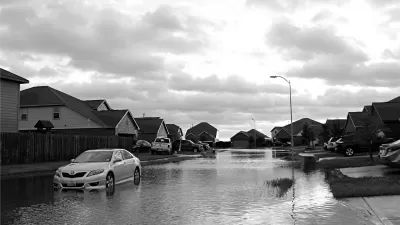With the costs of rebuilding after natural disaster in the U.S. escalating (now estimated at $50 billion a year), David R. Conrad and Edward A. Thomas argue that scant resources can be better spent on mitigation rather than rebuilding in place.
"Although climate change may be making the occurrence of major storms and floods more frequent, poor planning and bad development decisions are making disasters more expensive," say Conrad, an independent consultant on federal water resources policy, and Thomas, president of the Natural Hazard Mitigation Association.
"The government does not and should not dictate where people can live, own property or operate businesses. But policymakers could reduce the cost of disasters by investing more in natural-hazard mitigation and by implementing measures to discourage development of at-risk areas," argue the authors. "Our research estimates that if the government pursued these policies, it could save some $40 billion over the next decade."
"The goal should be to use federal money to prevent disasters, not merely to clean up afterward. Of course the government should continue to support Americans who are the victims of natural disasters, but we also need to help keep them safe from the next one. An effective way to reduce the cost of such events is to take active steps before a disaster even occurred."
FULL STORY: U.S. needs a better disaster plan

Pennsylvania Mall Conversion Bill Passes House
If passed, the bill would promote the adaptive reuse of defunct commercial buildings.

Coming Soon to Ohio: The Largest Agrivoltaic Farm in the US
The ambitious 6,000-acre project will combine an 800-watt solar farm with crop and livestock production.

World's Largest Wildlife Overpass In the Works in Los Angeles County
Caltrans will soon close half of the 101 Freeway in order to continue construction of the Wallis Annenberg Wildlife Crossing near Agoura Hills in Los Angeles County.

California Grid Runs on 100% Renewable Energy for Over 9 Hours
The state’s energy grid was entirely powered by clean energy for some portion of the day on 37 out of the last 45 days.

New Forecasting Tool Aims to Reduce Heat-Related Deaths
Two federal agencies launched a new, easy-to-use, color-coded heat warning system that combines meteorological and medical risk factors.

AI Traffic Management Comes to Dallas-Fort Worth
Several Texas cities are using an AI-powered platform called NoTraffic to help manage traffic signals to increase safety and improve traffic flow.
City of Costa Mesa
Licking County
Barrett Planning Group LLC
HUD's Office of Policy Development and Research
Mpact Transit + Community
HUD's Office of Policy Development and Research
Tufts University, Department of Urban and Environmental Policy & Planning
City of Universal City TX
ULI Northwest Arkansas
Urban Design for Planners 1: Software Tools
This six-course series explores essential urban design concepts using open source software and equips planners with the tools they need to participate fully in the urban design process.
Planning for Universal Design
Learn the tools for implementing Universal Design in planning regulations.


























